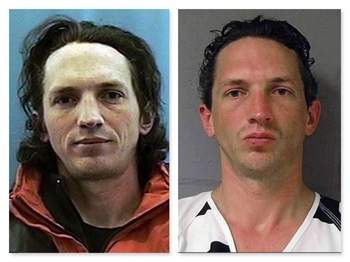By RACHEL D’ORO, Associated Press
ANCHORAGE, Alaska — An upcoming special episode of Investigation Discovery’s “Dark Minds” TV series says it has new information about confessed Alaska serial killer Israel Keyes, including the identity of a potential victim.
Keyes was believed to have killed at least 11 people before committing suicide in his Anchorage jail cell 15 months ago while awaiting a federal trial in the rape and strangulation murder of his last known victim, Samantha Koenig. The 18-year-old Anchorage woman was abducted in February 2012 from the local coffee stand where she worked.
The two-hour, season-opening “Dark Minds” episode scheduled to air April 2 reports what it says are new details about the Koenig case. The episode, which includes dramatizations by actors, also suggests a man who disappeared from Washington’s Olympia National Park in 2004 — Gilbert Gilman — was an undisclosed victim of Keyes, who had been in the region to participate in a marathon. And it claims Keyes identified himself as a bisexual and a necrophiliac.
Series creator and host M. William Phelps told The Associated Press that he spent more than a year investigating Keyes, interviewing people including authorities, a serial killer he calls “Raven,” a criminal profiler, people who knew Keyes, as well as former Assistant U.S. Attorney Craig Warner, who was present during many of Keyes’ interviews with the FBI.
“It really exhausted me, emotionally and physically, this case,” Phelps said Wednesday. “I was just living it 24/7.”
After the Koenig kidnapping, Keyes reportedly sipped wine in a toolshed outside his home, telling his victim there exactly what he planned to do before he sexually assaulted and killed her, leaving her body in the shed before embarking on a cruise the next day. The series also claims Keyes later sewed open the eyes of the dead and frozen victim to make her look alive as he photographed her with a new copy of a local newspaper.
Authorities have already revealed that Keyes wrote a ransom note on the back of the photo, demanding that $30,000 be placed in Koenig’s account. He texted a message, directing the family to a dog park where the note could be found. Her family deposited money from a reward fund.
Keyes also said he robbed banks to help pay for his travels to find random victims.
Keyes, the second eldest in a large family, was homeschooled in a cabin without electricity near Colville, Wash., in a mountainous, sparsely populated area. The family moved in the 1990s to Smyrna, Maine, where they were involved in the maple syrup business, according to a neighbor who remembered Keyes as a nice, courteous young man.
After leaving the Army, Keyes worked for the Makah Indian tribe in Washington, then moved to Anchorage in 2007 after his girlfriend found work here. A self-employed carpenter and handyman, he was considered competent, honest and efficient. He had a young daughter who lived with him and his girlfriend in Anchorage.
Keyes was arrested in Lufkin, Texas, about six weeks later after using Koenig’s debit card. Three weeks after the arrest, Koenig’s dismembered body was found in a frozen lake north of Anchorage.
The FBI and other authorities have been able to link Keyes to the only three victims he named — Koenig and an Essex, Vt., couple, Bill and Lorraine Currier, who disappeared in 2011. In months of interviews with authorities after his arrest last year, Keyes toyed with investigators, doling out snippets and clues about other possible victims across the country as he demanded a promise that he would be executed rather than spend his life in prison.
Keyes never disclosed much information about the other crimes, trying to keep as many details as possible out of the media so his daughter wouldn’t be able to find any information up on the Internet or his mother wouldn’t have a heart attack reading what he did.
The FBI has publicly released a timeline of travels and crimes by Keyes, hoping to shed light on unsolved killings in the nation. Authorities have been trying to determine whether Keyes was involved in the 2009 disappearance of a New Jersey woman, Debra Feldman, who was last seen at her Hackensack home.
Anchorage-based Special Agent Kevin Donovan with the FBI said Wednesday he didn’t immediately know the status of the New Jersey case. He also said authorities have received information about cases that could be tied to Keyes and are following up on it. But he said he wouldn’t characterize any of it as strong leads.
“We are still looking for any additional information from the public or from law enforcement that might help us identify additional victims,” he said.
At the end of the upcoming episode, Phelps urges viewers to help solve mysteries that remain about Keyes and his unknown victims.
“I hope the families can have some answers from this,” he said. “That’s my goal.”


